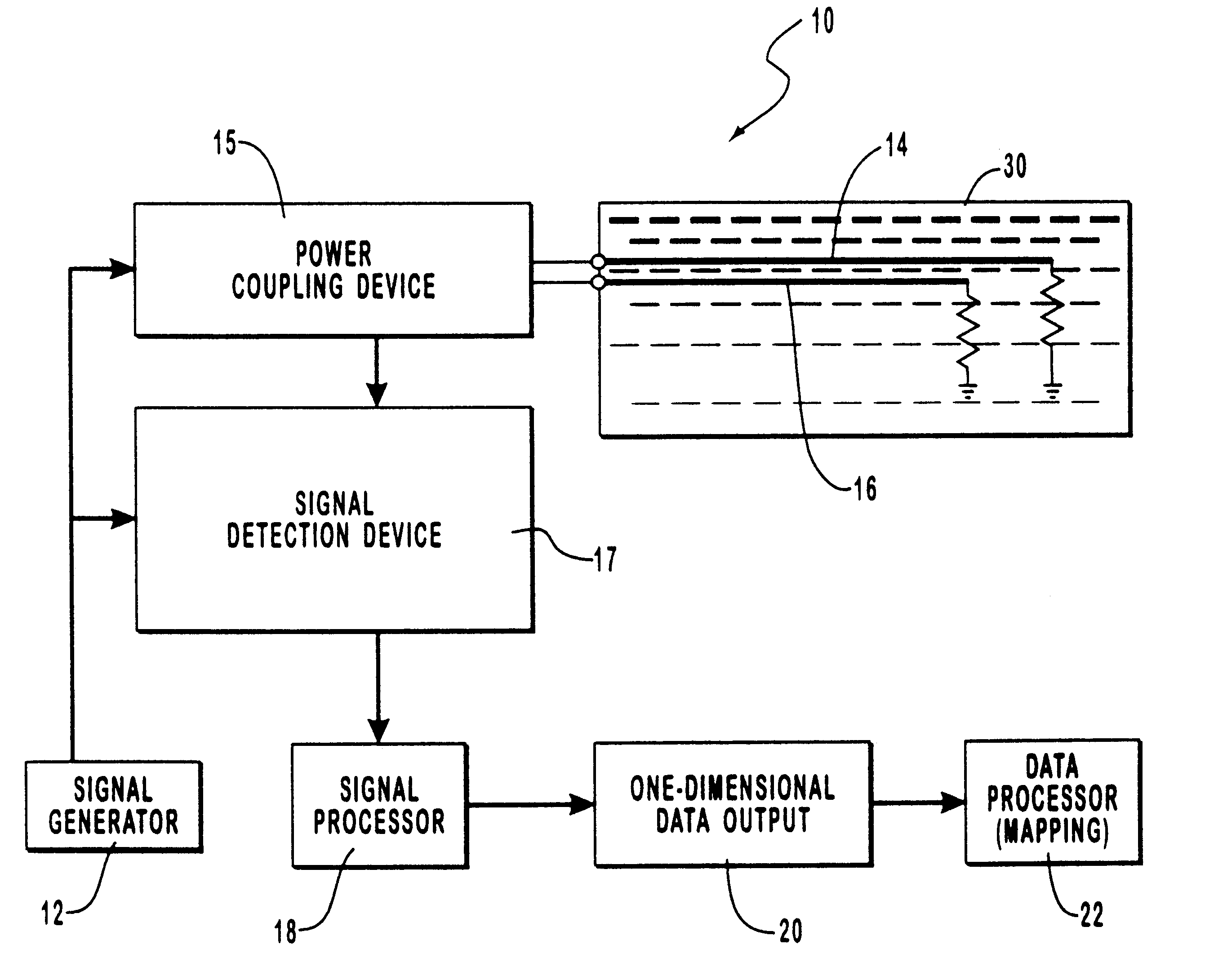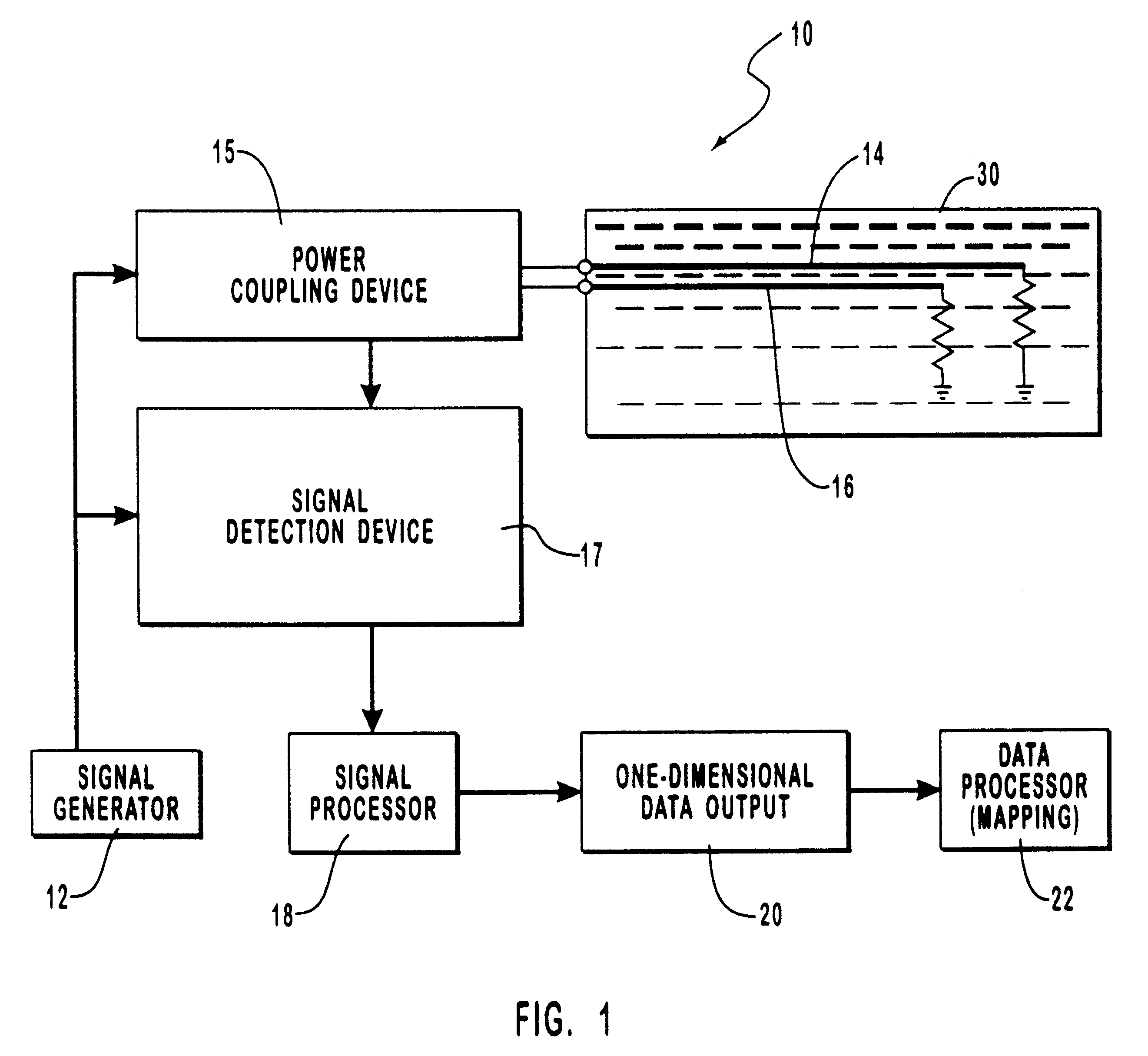System and method for monitoring water content or other dielectric influences in a medium
a dielectric influence and sensor technology, applied in the direction of resistance/reactance/impedence, instruments, nuclear engineering, etc., can solve the problems of affecting the accuracy of measurement, limiting the length over which water content can be measured, and weakening of pulses
- Summary
- Abstract
- Description
- Claims
- Application Information
AI Technical Summary
Benefits of technology
Problems solved by technology
Method used
Image
Examples
example 2
A sensor system was constructed including two slotted coaxial cables attached to a microwave generator and a laboratory network analyzer. The cables were buried in a twenty foot long trough of compost material simulating a biofilter application. When operated, the sensor system readily detected changes in water content of 0.05 g water / g soil. Changes on the order of 0.1 g / g are significant in biofilters, so good sensitivity was shown.
example 3
A sensor system was constructed comprising slotted coaxial cable lines 10 feet long attached to a microwave generator and a laboratory network analyzer. The slotted cable lines included a transmit line and a receive line that were one inch apart, and each line terminated with 50 ohms, which was the same impedance as the cable lines. The slotted cable lines were laid in a plastic tray and immersed in compost which had been air dried in room air and at room temperature for over two weeks. At 96.5 inches down the slotted cable lines and away from the network analyzer, an approximate 15 inch section of compost was removed and mixed with enough water to make a 15% by weight water content. This water / compost mixture was then added back to the section of compost where originally removed. Reference data at the starting time was then taken, with subsequent data taken at time periods of 18 hours, 42 hours, and 60 hours after the reference data. The boundaries of the region of compost with add...
example 4
A sensor system was constructed as described above in Example 3. The slotted cable lines were laid in a plastic tray and immersed in compost which had been air dried in room air and at room temperature for over two weeks. At 96.5 inches down the slotted cable lines and away from the network analyzer, an approximate 15 inch section of compost was removed and mixed with enough water to make a 6% by weight water content. This water / compost mixture was then added back to the section of compost where originally removed. Reference data at the starting time was then taken, with subsequent data taken at time periods of 4 hours, 8 hours, and 16 hours after the reference data. The signal frequency was swept from 1 MHz to 1000 MHz with 401 frequency points, and 10 dBm (10 mW) of power was applied.
FIG. 4 is a graph of the data collected during the above time periods depicting signal propagation time in relation to signal magnitude. The time shown is round trip time of propagation of the signal ...
PUM
 Login to View More
Login to View More Abstract
Description
Claims
Application Information
 Login to View More
Login to View More - R&D
- Intellectual Property
- Life Sciences
- Materials
- Tech Scout
- Unparalleled Data Quality
- Higher Quality Content
- 60% Fewer Hallucinations
Browse by: Latest US Patents, China's latest patents, Technical Efficacy Thesaurus, Application Domain, Technology Topic, Popular Technical Reports.
© 2025 PatSnap. All rights reserved.Legal|Privacy policy|Modern Slavery Act Transparency Statement|Sitemap|About US| Contact US: help@patsnap.com



